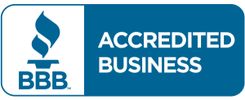Check Engine Light

The Check Engine Light, also known as the Service Engine Soon Light, or the Malfunction Indicator Light, is the way that your Car’s Onboard Computer is warning you that it is detected a problem that you should have checked out.
When the Electronic-Control System finds a problem, the Computer turns on a yellow Warning Indicator and stores a Trouble Code in it's memory. These Diagnostic Trouble Codes (DTC) help identify the probable source of the problem, such as a Malfunctioning Sensor or a Misfiring Engine and can be read with a Scan Tool or Diagnostic Computer. There are many, many Trouble Codes defined for the Computer to use, and just because you had a Check Engine Light come back on after a problem has been fixed for some time, does not mean that it is the same problem as before. Also, some Trouble Codes are very specific and help for a straightforward Diagnosis, others are vague and point to a general type of problem but not to the actual failing component.
Is it Urgent?
If the Check Engine Light illuminates, it will either Blink or remain constant, depending on the problem. Either way, you should have the vehicle checked by a Qualified Service Technician as soon as possible, at least to get the Code read.
If the light is steady. The problem is typically not an emergency, but you should schedule an appointment as soon as possible. For example, letting a problem such as a Misfire linger will only result in more expensive Repair bills in the future. In any case, check your Dashboard Gauges and Lights for indications of Low Oil Pressure or Overheating. These conditions mean you should pull over and shut off the Engine as soon as you can find a safe place to do so
A Blinking light usually indicates a Severe Engine Misfire allowing unburned Fuel to be dumped into the Exhaust System. There it can quickly raise the temperature of the Catalytic Converter to a point where damage is likely, requiring an expensive Repair. If this occurs, you should Reduce Power, pull over as soon as a safe location is available, and have the Vehicle Towed to the Auto Repair Shop.
Have the Codes read. Try the easy fixes first.
An EVAP leak (a Vapor Leak detected by the Car’s Emissions System sensors) can be as easy as a loose Gas Cap. Do not make the assumption that this is the entire issue unless you really find the Cap to be loose. Have the Code read, and then if it is EVAP, check the condition of the Rubber or Plastic Seal in the Gas Cap. If it looks worn or cracked, buy a good quality replacement Gas Cap. If it was just loose such as if you forgot to turn it the recommended 3 clicks, tighten it. Have the Codes cleared and drive the Car for a few days to see if the Code comes back. This often solves this type of problem. Remember, though, that there are many different types of Codes so without having the Code Read you really won’t know if you attacked the right problem. Also, an EVAP Failure can also be caused by any of the multitude of Vapor Lines and Vapor System Valves that make up that system. In those cases, a proper Electronic Diagnosis is needed, and sometimes even a ‘Smoke Test’ where an Automotive Smoke Machine is used to inject Smoke into the system and the Technician uses high power flashlights to examine all connections for areas that show Smoke leaking out.
Don't confuse the Check Engine light with the Maintenance Reminder or Service Interval Light. These Lights illuminate when a Routine Service is due. These Lights are usually triggered by Mileage, amount of Fuel consumed, or some other type of Vehicle-Use Measurement.
Check Engine Light and DMV Inspections
If your car is due for a DMV Inspection, at least here in North Carolina, you cannot pass if the Check Engine Light is on, nor if the ‘Readiness Indicators’ have reset to show that the Computer Tests have completed. You will not be able to run to Inspection right after the Codes have been cleared. The Engine Computer must have performed its cycle of tests first. For older cars you may be able to pass with up to Two Readiness Indicators not completed, but it depends on the year of the Car and the condition of the rest of the Car. The readiness indicators will take a few days for the Computer to complete its test and reset them. Some are immediate, but others, particularly EVAP and CAT, require a combination of city and highway Driving and a Cold Start in between. The cycle that the vehicle manufacturers need to comply with is called the Federal Drive Cycle and it has specific sequences that are required for each of the readiness indicators.
We are Professionals. Come see us!
We have deep experience and a multitude of diagnostic equipment to check your car and propose a resolution to its issues. If you have a Check Engine Light, or have Failed DMV inspection, call us at Benchmark Autoworks at 919-664-8009, and schedule an appointment to have us check it out.





Copyright © 2018 Benchmark Autoworks - All Rights Reserved.
Cookie Policy
This website uses cookies. By continuing to use this site, you accept our use of cookies.
